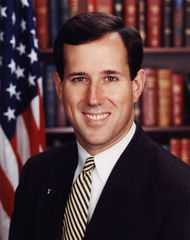Turnout at Kansas GOP Caucuses Soars 53 Percent from 2008
The Sunflower State records the biggest increase in GOP primary or caucus voter participation in the nation compared to the 2008 cycle

The headline was not Rick Santorum’s decisive 30.3-point victory over Romney – who did not aggressively compete in the Sunflower State – but rather the level of engagement and enthusiasm in the caucus process.
A Smart Politics review of the Republican presidential primary and caucus turnout numbers for the 2012 election cycle finds that Kansas has recorded the largest increase in voter participation compared to 2008 than any other state that has voted thus far this cycle.
The caucuses in Kansas on Saturday took place during the same time frame as four years prior, with both held on the Saturday following Super Tuesday in 2008 and 2012.
However, turnout increased by more than 10,300 voters from four years ago, with 19,516 Republicans participating in the 2008 caucuses and 29,857 doing so on Saturday.
That marks an increase of +53.0 percent from 2008 – with voters in both cycles opting for the more socially conservative underdog (Mike Huckabee, Rick Santorum) than the party’s more moderate frontrunner (John McCain, Mitt Romney).
The 53 percent uptick in participation is the largest among the 21 states that have voted thus far in 2012 with comparable data from 2008.
(Note: There is not comparable data for three of the 24 states that have voted in 2012 – Idaho (which held a primary in 2008 and a caucus in 2012), Wyoming (where the state Republican Party did not release vote totals for its 2008 caucuses), and Washington (which held its caucuses and primary 10 days apart in 2008, thus depressing caucus turnout).
After Kansas, the states seeing the largest increase in participation this cycle are South Carolina (+35.5 percent), Michigan (+14.6 percent), Ohio (+13.3 percent), Alaska (+11.6 percent), and North Dakota (+10.9 percent).
Overall, 10 states have seen an increase in primary or caucus participation from 2008 and 11 have seen a decrease.
The total number of primary and caucus voters across these 21 states is down 8.4 percent from 2008, from 8,917,745 voters four years ago to 8,172,557 this cycle.
To little surprise, the primaries in Missouri (-57.2 percent) and Virginia (-46.0 percent) suffered the biggest drop offs.
Missouri did not award any delegates for its February 9th primary while Romney’s two chief opponents – Santorum and Newt Gingrich – failed to make it onto the ballot in Virginia, creating a low-drama two-man contest between Romney and Ron Paul.
Other states seeing notable declines in participation this cycle are Massachusetts (-26.6 percent), Nevada (-25.6 percent), Minnesota (-22.1 percent), and Arizona (-15.2 percent).
Change in Republican Presidential Primary and Caucus Voter Participation from 2008 to 2012
|
State*
|
2008 Total
|
2012 Total
|
Difference
|
% Change
|
|
Kansas
|
19,516
|
29,857
|
10,341
|
+53.0
|
|
South Carolina
|
445,677
|
603,770
|
158,093
|
+35.5
|
|
Michigan
|
869,293
|
996,156
|
126,863
|
+14.6
|
|
Ohio
|
1,059,137
|
1,199,823
|
140,686
|
+13.3
|
|
Alaska
|
11,614
|
12,958
|
1,344
|
+11.6
|
|
North Dakota
|
9,785
|
10,849
|
1,064
|
+10.9
|
|
Vermont
|
39,843
|
43,595
|
3,752
|
+9.4
|
|
Maine
|
5,430
|
5,797
|
367
|
+6.8
|
|
New Hampshire
|
239,793
|
248,475
|
8,682
|
+3.6
|
|
Iowa
|
118,696
|
121,590
|
2,894
|
+2.4
|
|
Tennessee
|
553,815
|
550,359
|
-3,456
|
-0.6
|
|
Colorado
|
70,229
|
66,027
|
-4,202
|
-6.0
|
|
Georgia
|
963,541
|
900,345
|
-63,196
|
-6.6
|
|
Florida
|
1,949,498
|
1,672,634
|
-276,864
|
-14.2
|
|
Oklahoma
|
335,054
|
286,298
|
-48,756
|
-14.6
|
|
Arizona
|
541,035
|
458,631
|
-82,404
|
-15.2
|
|
Minnesota
|
62,828
|
48,916
|
-13,912
|
-22.1
|
|
Nevada
|
44,315
|
32,963
|
-11,352
|
-25.6
|
|
Massachusetts
|
500,550
|
367,338
|
-133,212
|
-26.6
|
|
Virginia
|
489,252
|
264,247
|
-225,005
|
-46.0
|
|
Missouri**
|
588,844
|
251,929
|
-336,915
|
-57.2
|
|
Total
|
8,917,745
|
8,172,557
|
-745,188
|
-8.4
|
* Excludes Idaho, Washington, and Wyoming. ** Missouri will hold its delegate-awarding caucuses on March 17th. Table compiled by Smart Politics.
Follow Smart Politics on Twitter.
